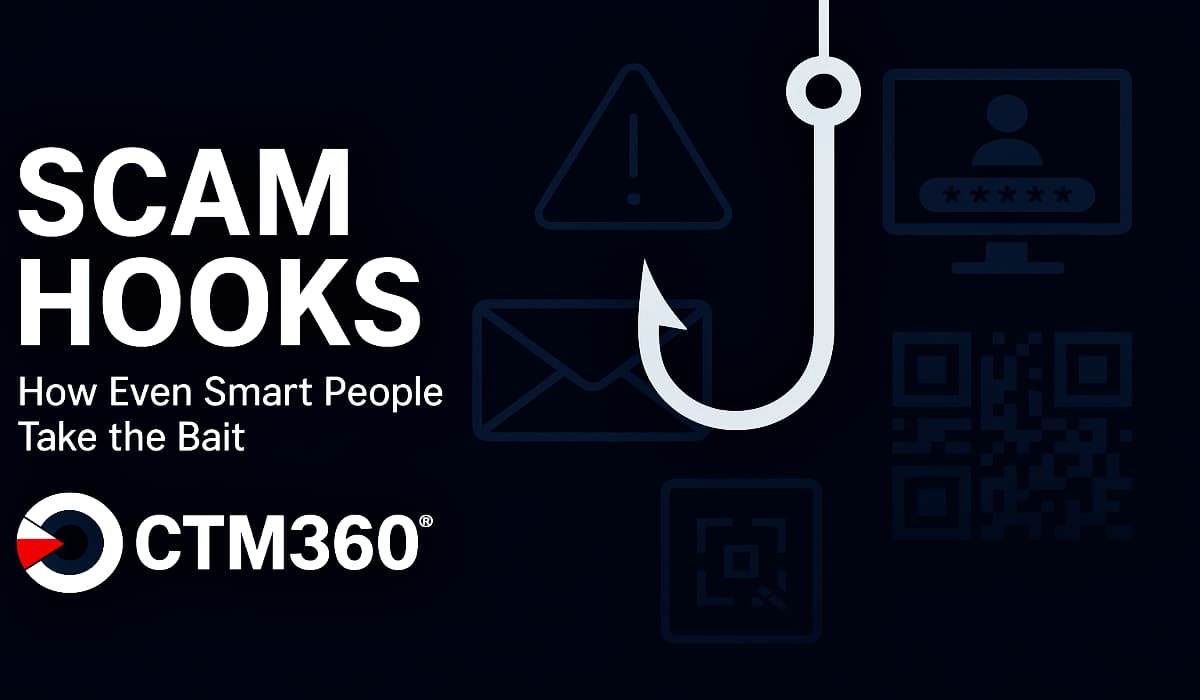Science
Scammers Exploit Emotions with AI-Driven Manipulative Tactics

Research conducted by CTM360 has revealed that modern scammers are increasingly using sophisticated emotional manipulation to ensnare their victims. These tactics, which leverage artificial intelligence (AI), stolen data, and brand impersonation, extend far beyond traditional phishing. Instead of merely casting a wide net, fraudsters now exploit trust, urgency, fear, and other emotions to compel individuals and organizations to engage unwittingly with scams.
Scam hooks, the initial triggers that prompt victims to click, reply, pay, or share sensitive information, form the basis of these deceitful campaigns. They manifest as seemingly legitimate alerts, invoices, login pages, or QR codes. This evolution in fraudulent tactics means that scams have become more intricate and harder to detect, blending seamlessly into everyday digital interactions.
Understanding the Mechanics of Modern Fraud
Today’s fraud landscape has shifted from brute force to psychological manipulation. Scammers do not simply break into systems; they engage users in a conversation that leads to vulnerability. Once emotions are triggered, judgment diminishes, making it easier for fraudsters to succeed. Fear, urgency, greed, and curiosity are common emotional triggers that scammers exploit to narrow a victim’s judgment and compel them to act quickly without caution.
For instance, messages that threaten account lockouts or impersonate executives can create scenarios that pressure individuals into making hasty decisions. These emotional appeals are crafted to compress time and spike anxiety, pushing users towards unsafe choices.
CTM360 categorizes the methods used by scammers into four primary groups:
1. **Psychological traps** that exploit emotions through urgency or fear.
2. **Technical and design traps** utilizing fake login pages, look-alike domains, or malicious applications.
3. **Social engineering traps** that manipulate trust by impersonating IT staff or executives.
4. **Content and media traps** that lure victims with fake stories or job offers, often utilizing deepfake technology.
The Role of AI in Fraud Tactics
The integration of AI into fraud tactics marks a new era for scammers. Tools like chatbots can create convincing phishing emails, while voice cloning technology allows fraudsters to impersonate familiar contacts. Reports indicate that nearly a third of individuals have encountered AI-driven voice scams, often without realizing the technology was being used against them. This rapid adaptation of tactics allows fraudsters to keep pace with current trends, creating polished and deceptive communications that are increasingly difficult to identify as fraudulent.
As the volume of scams continues to rise, the distinction between reality and deception blurs. Scammers are continuously evolving their strategies, but CTM360’s research offers insight into identifying potential traps. By examining real-world examples, the report aims to enhance awareness and equip both individuals and organizations with the knowledge needed to recognize these deceptive hooks before they take hold.
The key takeaway from CTM360’s report, titled “SCAM HOOKS: How Even Smart People Take the Bait”, emphasizes that awareness is crucial in reducing the risk of falling victim to fraud. Individuals and businesses alike face the challenge of maintaining vigilance in their digital interactions. Recognizing scam hooks and pausing before responding can protect digital trust and help prevent costly losses.
As fraud tactics evolve, the frontline of defense shifts to the judgment of users. Understanding how these scams operate empowers individuals to navigate their digital environments more safely. For further insights on identifying these hooks and protecting oneself from fraud, the full report is available at CTM360’s website.
-

 Technology5 months ago
Technology5 months agoDiscover the Top 10 Calorie Counting Apps of 2025
-

 Health3 months ago
Health3 months agoBella Hadid Shares Health Update After Treatment for Lyme Disease
-

 Health3 months ago
Health3 months agoErin Bates Shares Recovery Update Following Sepsis Complications
-

 Technology4 months ago
Technology4 months agoDiscover How to Reverse Image Search Using ChatGPT Effortlessly
-

 Technology1 month ago
Technology1 month agoDiscover 2025’s Top GPUs for Exceptional 4K Gaming Performance
-

 Technology3 months ago
Technology3 months agoElectric Moto Influencer Surronster Arrested in Tijuana
-

 Technology5 months ago
Technology5 months agoMeta Initiates $60B AI Data Center Expansion, Starting in Ohio
-

 Technology5 months ago
Technology5 months agoRecovering a Suspended TikTok Account: A Step-by-Step Guide
-

 Health5 months ago
Health5 months agoTested: Rab Firewall Mountain Jacket Survives Harsh Conditions
-

 Lifestyle5 months ago
Lifestyle5 months agoBelton Family Reunites After Daughter Survives Hill Country Floods
-

 Health3 months ago
Health3 months agoAnalysts Project Stronger Growth for Apple’s iPhone 17 Lineup
-

 Technology4 months ago
Technology4 months agoHarmonic Launches AI Chatbot App to Transform Mathematical Reasoning





















